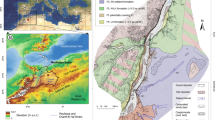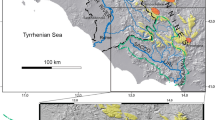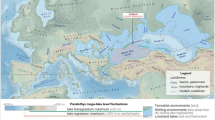Abstract
EVIDENCE of long-continued, interplay of Old Red tectonic activity and sedimentation has recently been unravelled in the Hornelen Series of western Norway. This series has an estimated stratigraphical thickness of 20–25,000 metres of shallow-water clastic sediments1. The enormous thickness probably is real because tectonic repetitions should not escape notice in this well-exposed, obsequent rift block mountain-area with barren homoclinal ridges and mountain peaks up to more than 1,600 metres above the fjords. The disposition of the bedding simulates an amphitheatre with regular eastwards dip in the middle.
This is a preview of subscription content, access via your institution
Access options
Subscribe to this journal
Receive 51 print issues and online access
$199.00 per year
only $3.90 per issue
Buy this article
- Purchase on Springer Link
- Instant access to full article PDF
Prices may be subject to local taxes which are calculated during checkout
Similar content being viewed by others
References
Kolderup, C. F., Bergens Mus. Aarb., 1926, Nat. vidensk. række 6 (1927).
Crowell, J. C., Bull. Amer. Assoc. Petrol. Geologists, 34, 1623 (1950).
Crowell, J. C., Bull. Calif. Div. Mines, 170, Map Sheet 7 (1954).
Allan, D. A., Trans. Roy. Soc. Edin., 60, 171 (1940).
Campbell, R., Trans. Roy. Soc. Edin., 48, 923 (1913).
Author information
Authors and Affiliations
Rights and permissions
About this article
Cite this article
BRYHNI, I. Migrating Basins on the Old Red Continent. Nature 202, 384–385 (1964). https://doi.org/10.1038/202384b0
Issue Date:
DOI: https://doi.org/10.1038/202384b0
Comments
By submitting a comment you agree to abide by our Terms and Community Guidelines. If you find something abusive or that does not comply with our terms or guidelines please flag it as inappropriate.



